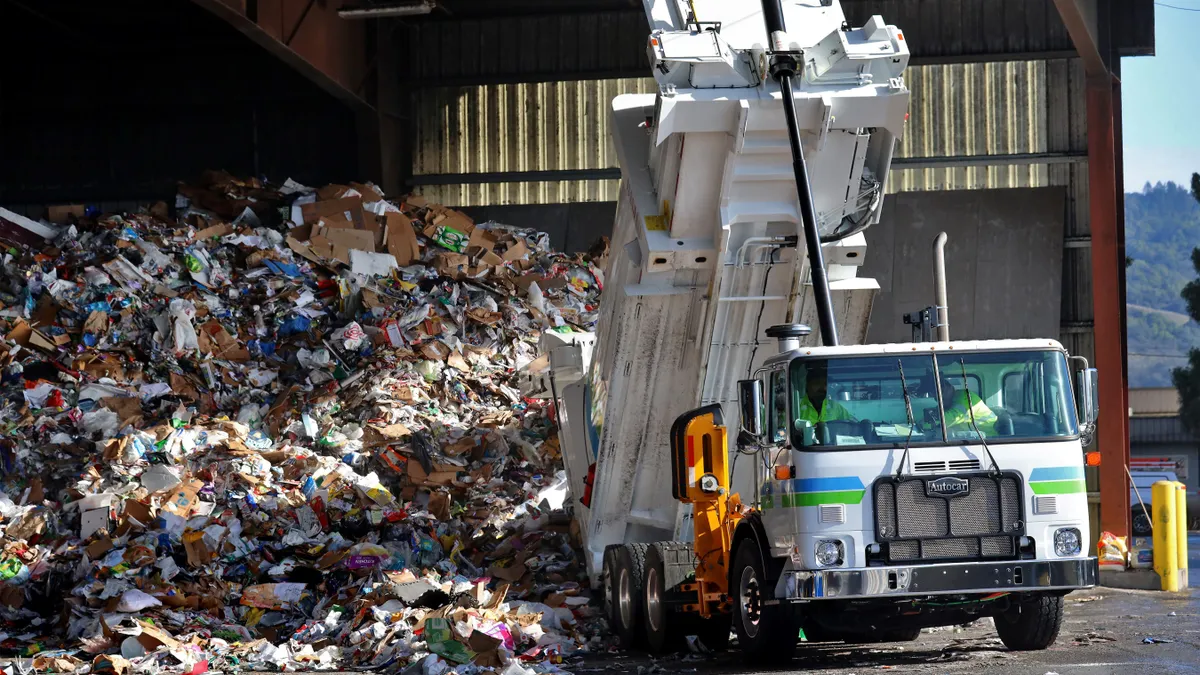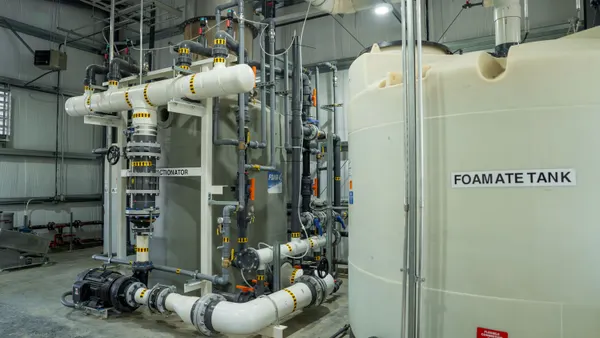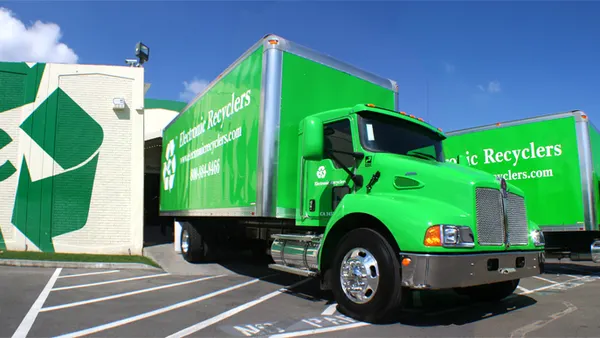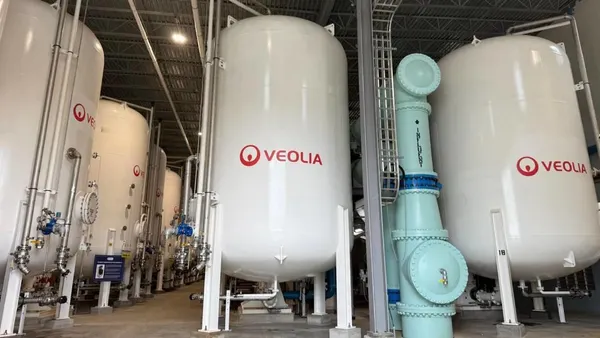Dive Brief:
- West Coast waste company Recology reported several sustainability milestones and continued emissions reductions in its latest sustainability report, which covers the fiscal year that ended Sept. 30, 2023.
- While Recology doesn't have specific scope 1 and 2 emissions reduction goals, it aims to power its facilities with “100% renewable or carbon-free electricity” and convert 75% of the landfill gas it collects into energy by 2028. Those targets were set last year after Recology met its goal to improve fleet emissions.
- The company said it has reduced its scope 1 and 2 emissions 23% since 2018. It has also improved its material recovery rates, thanks in part to a growing network of customers complying with California’s SB 1383 organics diversion law.
Dive Insight:
Recology’s fifth sustainability report highlighted its work in local and international arenas, including CEO Sal Coniglio’s attendance at COP28, the most recent United Nations climate change conference. The company manages 27 collection operations, 19 transfer stations and over a dozen MRFs and composting facilities across California, Oregon and Washington.
The company also noted its support for California's recently passed SB 253, the Climate Corporate Data Accountability Act. Similar to a federal regulation that's currently tied up in court, the California law will require large corporations to disclose all three of their emissions scopes beginning in 2026. Recology does not currently report its own scope 3 emissions, but that would need to change under the law.
The vast majority of Recology's emissions — 87% — come from its landfill gas. Recology owns two active landfills, which generate a combined 877,469 mmBtus of landfill gas. Of that, 61% was flared and 39% was used for energy in 2023.
While the company has worked to meet its landfill gas conversion goal, the percentage of gas it converted to electricity declined year-over-year in both 2022 and 2023. Recology reported that trend is due to system upgrades and increasing gas volumes, which should reverse once upgrades are completed. Other waste companies, including WM, have charted similar trajectories.
Recology said it's expanding or installing new energy generation facilities and improving its existing gas collection systems by working with companies like LoCI Controls. The company is also partnering with G2 Energy for its landfill-gas-to-energy systems, per the report.
To meet its facility energy goal, Recology said it is “opting into cleaner electricity portfolios, installing on-site renewable electricity generation and purchasing renewable energy certificates.”
The company reported collecting or processing 1.4 million tons of recyclable and compostable material in 2023, an increase from the prior year. In November 2023, it completed a $35 million upgrade to one of its MRFs in Santa Rosa, California. It also added hundreds more organics customers to its network, recovering 27% more material for its composting facilities than it did in 2022.
Finally, Recology highlighted its continued efforts on fleet sustainability. In 2022, the company met its goal to power 90% of its fleet with renewable or alternative fuels like natural gas. It reported 89% of the fleet fuel it consumed was renewable in 2023 and 84% of its vehicles were powered by fuels with a lower carbon impact than diesel.
Besides running a fleet of vehicles powered by alternative fuels, Recology has also been an early adopter of electric vehicles. Last year, it reported it had two heavy-duty zero-emission vehicles in its fleet as well as more than a dozen medium-duty and support electric vehicles. This year, Recology is also conducting a pilot with Hyzon and New Way Trucks to test their hydrogen fuel cell collection vehicle in San Francisco.











